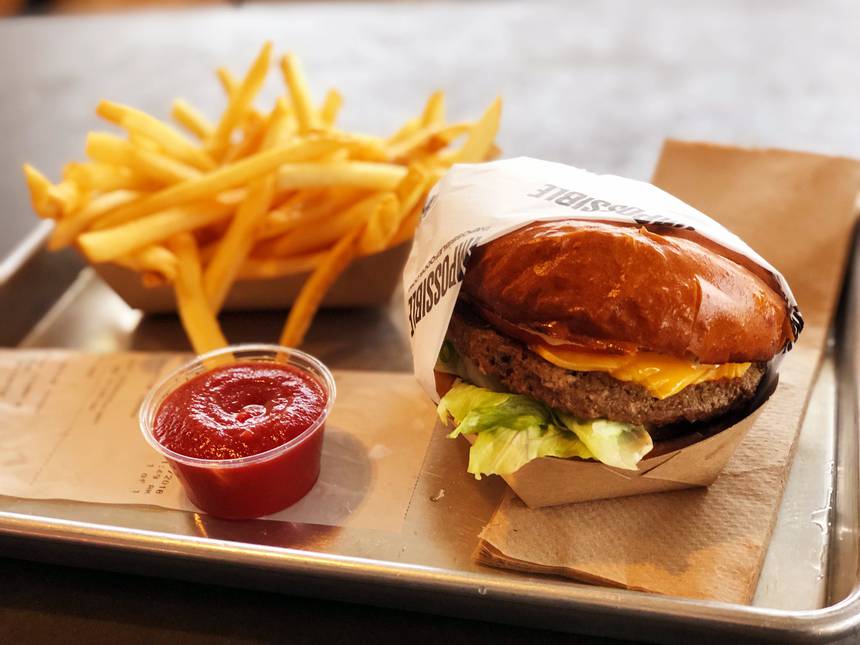It uses 87% less water and 96% less land.
When Impossible Foods released the 2.0 version of its flagship burger, much of the focus was on improved taste and texture. It turns out, however, that the new-and-improved recipe also offers some incremental sustainability improvements over the first generation. More important is how the burger stacks up against its animal-based competition.
According to an independent Life Cycle Analysis (LCA) from Swiss consulting firm Quantis, the results are pretty clear:
—It requires 87% less water.
—It releases 89% less greenhouse gases into the atmosphere.
—It contributes 92% less water contamination, the major cause of dead zones in our oceans
—It spares 96% more land and habitat for nature and biodiversity.
Now, I should be clear that I haven’t been able to see the analysis itself yet. (It was under embargo at time of writing.) So I can’t exactly evaluate what metrics or assumptions are being used to establish the baseline impact of beef that the burger is being compared against. As tends to happen whenever we wade into the meat-versus-plants debate, I’m sure there will be folks who dispute the basic math and argue that integrated, sustainable farming requires livestock as part of the system.
However, it’s hard to argue with the fact that a large and growing body of evidence points to industrial-scale meat production—and beef in particular—as a significant driver of climate change. If we can switch out the world’s apparently endless appetite for fast food, soy-fed beef in favor of fast food, soy-based protein, the kinds of environmental benefits being touted above seem eminently believable.
Here’s how Impossible Foods’ CEO, Chairman, and Founder Dr. Patrick O. Brown describes the mission:
“We are dead serious about our mission of providing vastly more sustainable options than livestock in the food chain. To do that, we have to make meat that’s delicious, nutritious, versatile and affordable—and it must also be vastly more efficient and sustainable than anything else on the market. We constantly measure and optimize every aspect of our product — particularly taste and sustainability.”
Having mostly enjoyed version 1.0, I look forward to checking out how 2.0 compares.
Update: An executive summary of the LCA is now available online and it provides a little more detail. Top the point of at least one commenter below, the water savings figure, for example, stems primarily from savings from irrigating feed crops—so applies more to feedlot than pasture raised meats.
